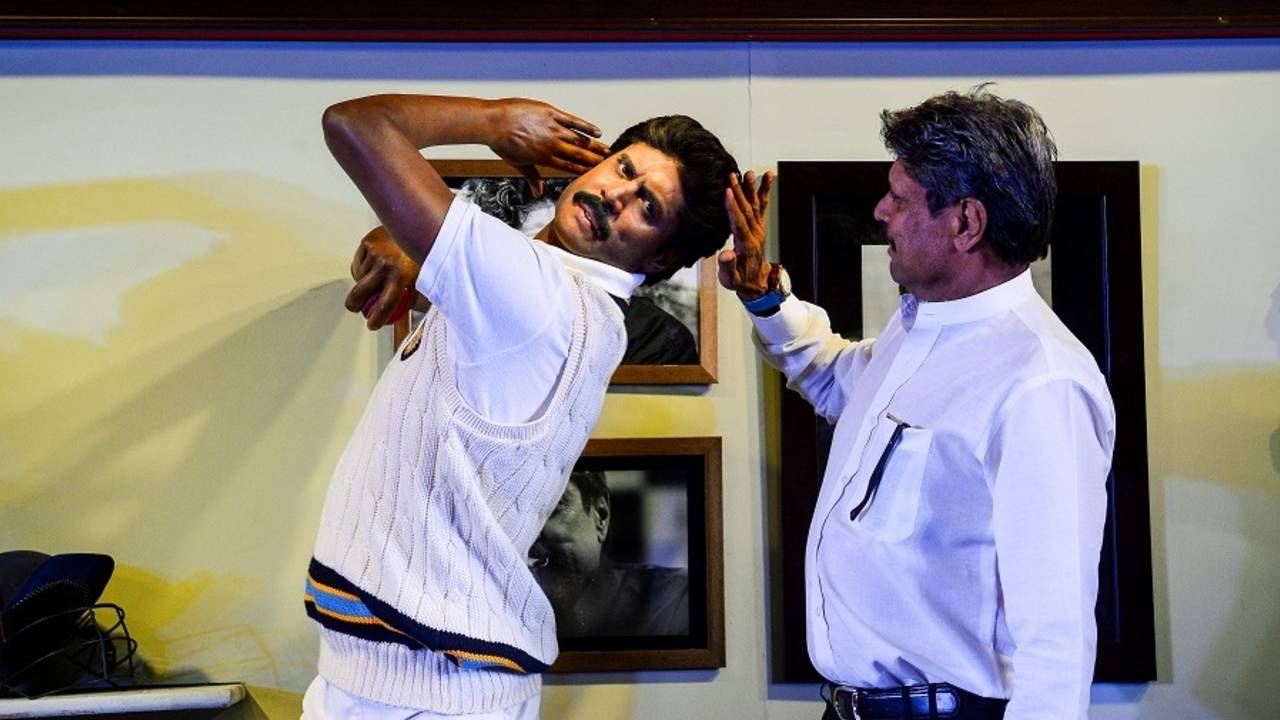Kapil Dev: 'Sachin Tendulkar never became a ruthless batsman'
India's former captain also looks back on his own record, and the other premier allrounders of his era
AFP
Kapil Dev: "When you're 9 for 4, you're shattered inside, but coming from a resilient background, I had the heart to fight back. I went in and asked Yash [Yashpal Sharma] what the matter was. He said, 'Bas aa rahein hain, aur ja rahein hain [The batters are arriving and departing way too quickly]. We're inexplicably getting caught behind.' And then soon after, Yash himself got out and in came Roger Binny. I asked him to play the full over and stay at the wicket and not go for runs, assuring him we would [eventually] get the runs, and we soon were able to stitch together a partnership.
'In cricket, when you plan, you should always only have a Plan A; Plan B or Plan C are weak people's options'

"Sachin had so much talent, we hadn't seen it in anyone. He was born in an era where he knew how to score hundreds but he never became a ruthless batsman. Sachin had everything in cricket. He knew how to score hundreds but didn't know how to convert those hundreds into double-hundreds and triple-hundreds. Sachin had the talent to make at least five triple-centuries and another 10 double-hundreds because he could hit fast bowlers and spinners for a six or a four every over. However, he got caught up in the Mumbai cricket [mindset]: when you score a hundred, make a line and start from zero again. And that's where I said no, you are such a ruthless cricketer, be like Virender Sehwag.
'He knew how to score hundreds but didn't know how to convert those hundreds into double-hundreds and triple-hundreds'On Sachin Tendulkar
"The best bowling was Richard Hadlee's - he was like a computer among the four of us. I wouldn't say Imran Khan was the best athlete or the most natural, but he was the most hardworking player we've seen. When he started out, he looked like an ordinary bowler, but then he became a very hardworking fast bowler and he learned by himself. And then he worked on his batting as well.
"With time, your body starts changing, your injuries, shoulder, knees - your body starts adjusting accordingly. When you're young, around 18-20 years old, your natural ability comes to the fore. In the '90s, I was no longer a young boy and was getting on the wrong side of my cricketing career, so the outswing probably started waning and because I [had] started working on incoming deliveries more than I was thinking about outswing. I feel I can bowl outswingers even today. But, yes, things start changing once you turn 30.
'I wouldn't say I was the greatest, but I was a better athlete than all three put together'Kapil Dev on how he compares to Ian Botham, Imran Khan and Richard Hadlee
"Looking back, that tally [of 5248 in Tests] could have been much more. Back in the day, we didn't get the kind of guidance that's available to the current generation - video analysis and other such useful aids. It's easy to resort to hindsight and make assessments about could-have-beens in one's career, but I do admit that my colleagues were right, and I, too, am critiquing my own career here: if I had more time and thought in my game, I would have scored more than another 2000 runs."
